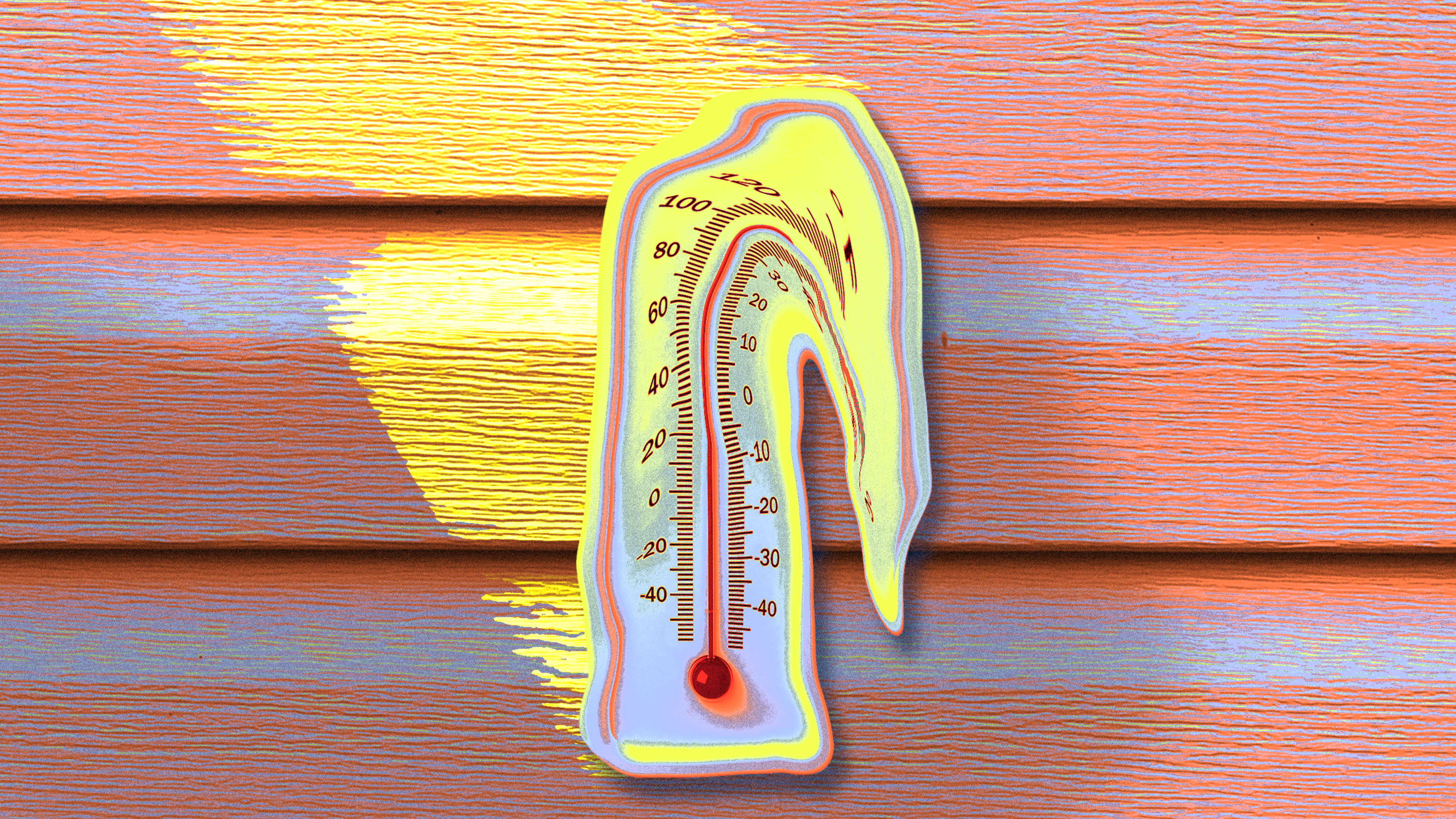It’s a standard refrain in local weather reports, especially as climate change makes temperatures climb higher: How much hotter than normal is it? In Phoenix, where the city was hotter than 100 degrees for more than a third of the days in 2020, it was sometimes 10 degrees hotter than “normal.” In San Francisco, where it’s typically so cool in the summer that few people own air conditioners, a 99-degree day last August was around 20 degrees hotter than “normal.” Parts of Alaska—where warming is happening fastest—have been 50 degrees hotter than “normal” in recent years.
“Normal,” in this case, is based on three decades of historical data, from 1981 through 2010. But the data are periodically updated, and the National Oceanic and Atmospheric Administration’s National Centers for Environmental Information will soon release new “climate normals” from the ’90s through the 2010s. Because the 2010s were the hottest decade in recorded history, it means that normal will skew hotter than before. That’s good for an engineer trying to accurately plan how to heat or cool a building in a particular city. But it’s not as helpful for communicating climate change. A blisteringly hot day will sound a little less hot in comparison.
“I think that as we go forward in time, there’s going to be an increasing divergence between sort of what we perceive to be normal, and what our bodies, our ecosystems, and our infrastructure is actually adapted to, which is the past climate,” says Daniel Swain, a climate scientist at UCLA and research fellow at NCAR’s Capacity Center for Weather and Climate Extremes. “So sometimes these new climate normals capture the former but not the latter.”
There’s some research, he says, that suggests that people’s perception of their local climate is based on what they’ve experienced in the past three to five years. (If you live in California, for instance, you probably won’t be surprised if there are massive wildfires again in 2021.) The updated NOAA data will be more in line with our psychological adaptation but will obscure the more significant changes that are underway. Somerset County, New Jersey, is now an average of 2.2 degrees Celsius hotter than it was at the end of the 1800s. Los Angeles County is 2.3 degrees Celsius hotter. The numbers might sound small, but they have major impacts; globally, countries are aiming to limit average warming to 1.5 degrees Celsius.
If it was already hard for humans to perceive change on longer time scales, the new climate normals will help subtly reinforce that. And it’s likely that some people will misstate the data to try to claim that global warming isn’t happening. “I can guarantee you right now there’s going to be blog posts on the internet and certain pundits who claim over the next 5 to 10 years that suddenly we’re not having above-normal temperatures,” Swain says.
Recognize your brand’s excellence by applying to this year’s Brands That Matter Awards before the early-rate deadline, May 3.
